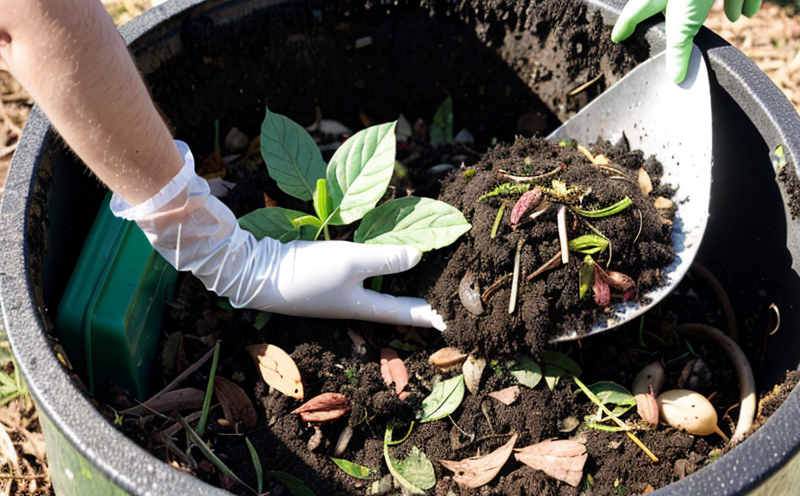EPA Method 1684 Total Solids and Microbial Activity Testing
The EPA Method 1684 is a comprehensive protocol designed to assess the total solids content and microbial activity in waste management and compost systems. This method, which aligns with ISO standards for quality assurance, plays a crucial role in ensuring that materials meet regulatory requirements for environmental safety.
Understanding the total solids content is vital for effective waste management as it helps in determining the appropriate moisture levels necessary for optimal composting processes. Excessive water can lead to anaerobic conditions which might result in bad odors and the production of pathogens, while insufficient water could hinder microbial activity essential for decomposition.
Microbial activity is equally important since it reflects the biological health of the compost material. Active microbes not only break down organic waste into simpler compounds but also contribute to nutrient release beneficial for soil fertility. By using EPA Method 1684, facilities can ensure their compost meets stringent quality standards set by regulatory bodies.
The testing process involves several steps including sample preparation and incubation under controlled conditions that mimic natural composting environments. This ensures accurate representation of real-world scenarios where these materials will be used. The results obtained from this method are then compared against established benchmarks to determine compliance with relevant environmental regulations.
| Step | Description |
|---|---|
| Sample Collection | Collect representative samples from various points within the compost pile. |
| Preparation | Thoroughly mix collected samples to ensure homogeneity before weighing and drying. |
| Drying | Dry prepared samples at 105°C until constant weight is achieved. |
| Weighing | Weigh the dried sample to calculate total solids content. |
The drying step is critical as it removes water from the material, leaving only the non-volatile components which constitute the total solids. Once determined, this value provides insight into both the moisture level and potential for microbial activity once reintroduced to an environment.
Why It Matters
The importance of EPA Method 1684 cannot be overstated in today's regulatory landscape. Compliance with this method ensures that waste management practices are not only environmentally responsible but also economically efficient by avoiding costly remediation efforts later on.
- Ensures compliance with local, state, and federal regulations regarding compost quality.
- Aids in maintaining consistent product quality across different batches of compost.
- Facilitates safer handling practices for both workers and end-users of the final product.
- Promotes sustainable waste management processes by optimizing resource use.
In addition to these benefits, adhering to EPA Method 1684 also enhances brand reputation among consumers who increasingly demand eco-friendly products. By demonstrating commitment to high standards of environmental stewardship, businesses can establish themselves as leaders in responsible waste management practices.
Scope and Methodology
| Parameter | Details |
|---|---|
| Total Solids Content Determination | Dry samples at 105°C until constant weight is reached. Calculate percentage based on initial wet weight. |
| Microbial Activity Measurement | Inoculate prepared samples with defined microbial cultures and incubate under controlled conditions. Monitor activity over specified periods. |
Industry Applications
- Quality control in waste management facilities to ensure proper moisture levels and microbial activity.
- R&D for developing new compost formulations that meet strict environmental standards.
- Compliance auditing by regulatory agencies to verify adherence to established guidelines.
- Safety training programs aimed at educating employees about safe handling practices during processing stages.





